Rejoice!
Here at the ARUSA blog, we’ve done a series or two on waiting, because our two seasons of waiting – Lent and Advent – are important parts of the Christian year. They call us inward, to reflect on the processes of the earth and our roles within them.
However, we haven’t yet done a series on the aftermath of these seasons. These two important holidays, especially Easter, draw us back out into the world with new eyes and hearts. And they beg the question: what now?
This Easter, we have assembled a group of writers to reflect on that “what now?” question. For the next seven weeks of the Easter season, we will be leaning into the implications of resurrection for creation care and the ways we honor and interact with the world around us. We hope that it spurs your own Easter-inspired labors of love, and that you will join the conversation. What is inspiring your Easter creation care?
By Flo Paris Oakes
One of the New Testament readings during the season of Easter comes from Luke’s account of Jesus appearing to his friends post-resurrection. When they fear that they are looking at a ghost, Jesus offers his hands and says,
“’See my hands and my feet, that it is I myself. Touch me, and see. For a spirit does not have flesh and bones as you see that I have.’ And when he had said this, he showed them his hands and his feet. And while they still disbelieved for joy and were marveling, he said to them, ‘Have you anything here to eat?’ They gave him a piece of broiled fish, and he took it and ate before them.” (Luke 24:39-43, ESV)
Christians tend to isolate these verses as a sort of gotcha moment that proves the resurrection to the unbelieving. While it’s true that this is an important piece of proof for Jesus’s resurrection, perhaps we overlook the simplicity of a human moment—God, after three days in the grave, was hungry.
Jesus rose from the dead, but he didn’t shed his humanity like an old snakeskin. He fed it, he nurtured it, and he invited his friends to recognize it. For forty daysafter his resurrection. And when it was time for him to go dwell beside the Father, the Acts account of the ascension tells us that he kept it. Jesus’s bodily ascension is a strong reminder that heaven will not be a place of disembodied spirits floating in the clouds. Jesus’s body, right now, exists in all of its physicality.
At our Creation Care Camp, children enjoy the good gifts of God’s creation—mentally, spiritually and bodily. We feel the sun on our skin, we splash in the water, we dig in the dirt, and we “keep the feast”—in part to remember the work of Jesus, but also, because like God himself, we get hungry.
We believe that Jesus will someday return, with his whole body, bringing the Kingdom of Heaven to Earth, where we will participate in a physical Kingdom with real, glorified bodies. In the meantime, we care for the land, for our bodies, and for each other. We get hungry, we eat, and we give thanks to a God who has experienced the fullness of humanity.
Flo Paris Oakes is Curriculum Manager and Wild Wonder Author for A Rocha USA and Education Coordinator for Nashville A Rocha. With a degree in English and Sustainability from Lipscomb University, her roles include writing and developing creation care curricula, leading educational walks and events in Nashville, and contributing to A Rocha Arts music projects. Flo lives in Nashville, TN with her husband, two daughters, and beloved dog.









Add a Comment